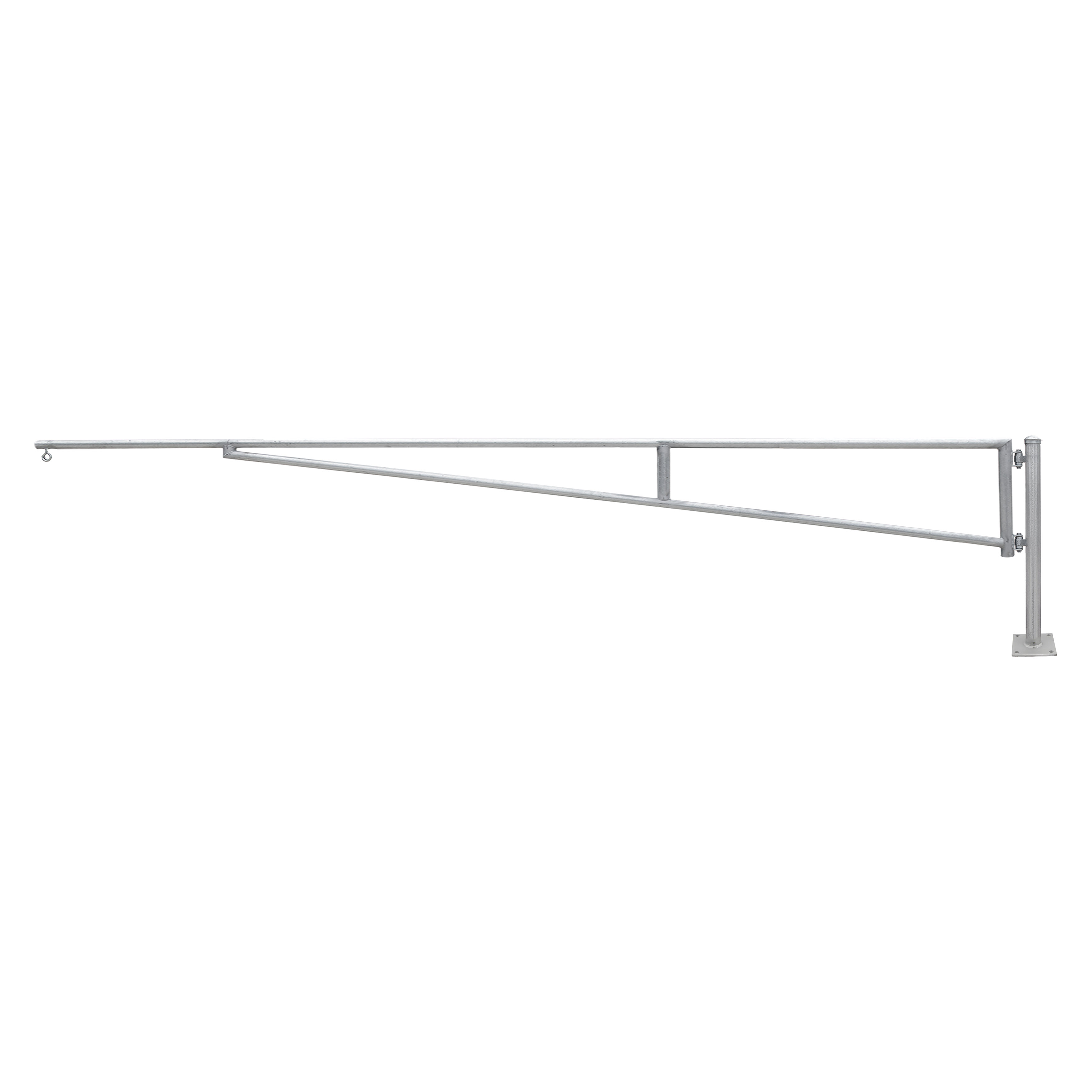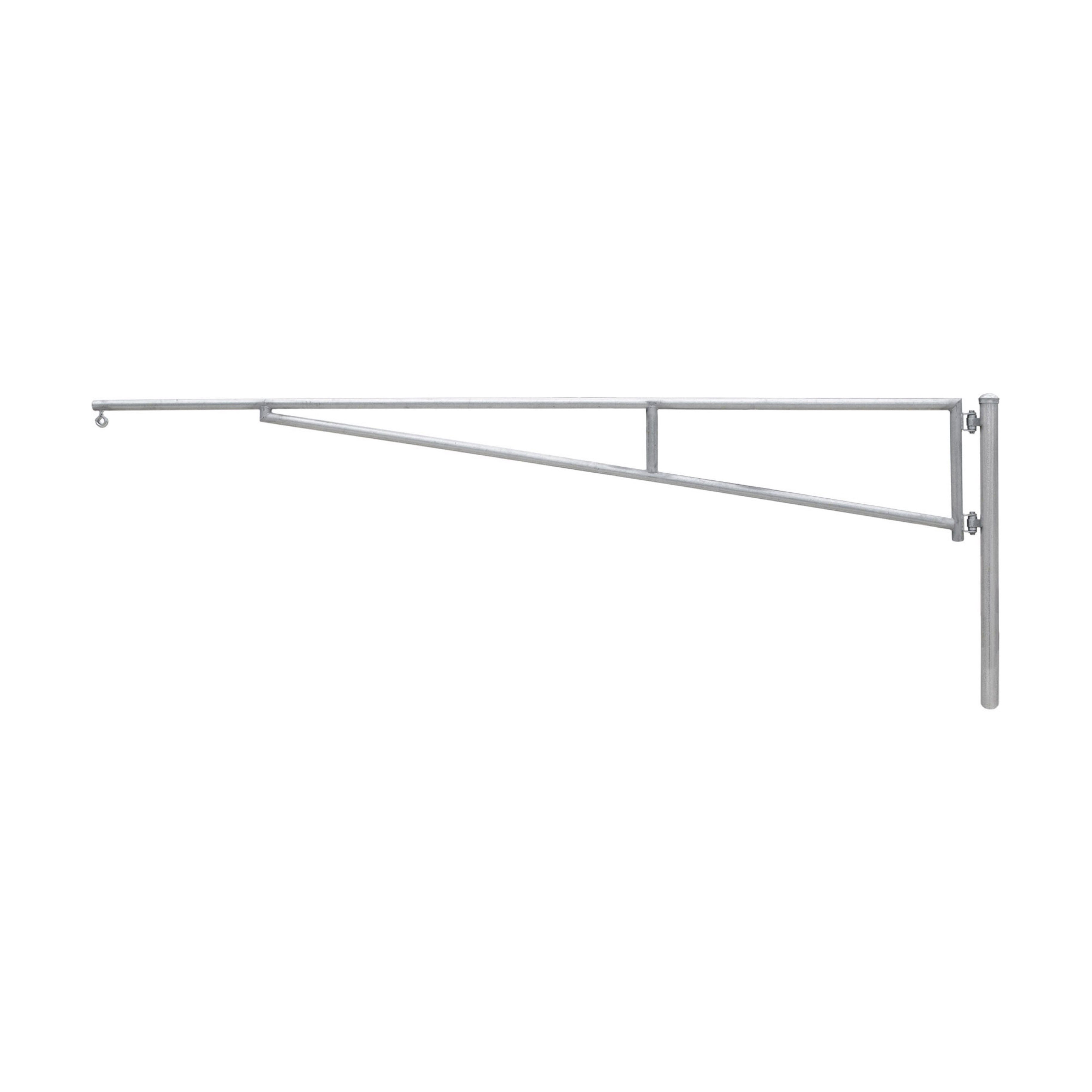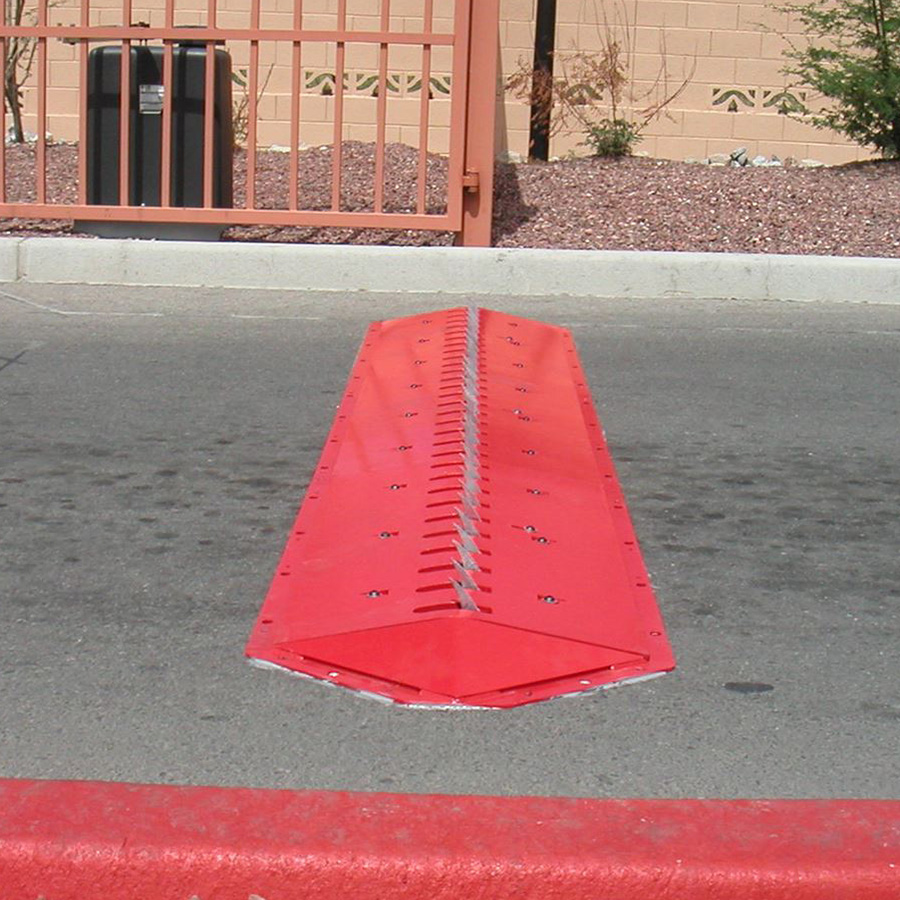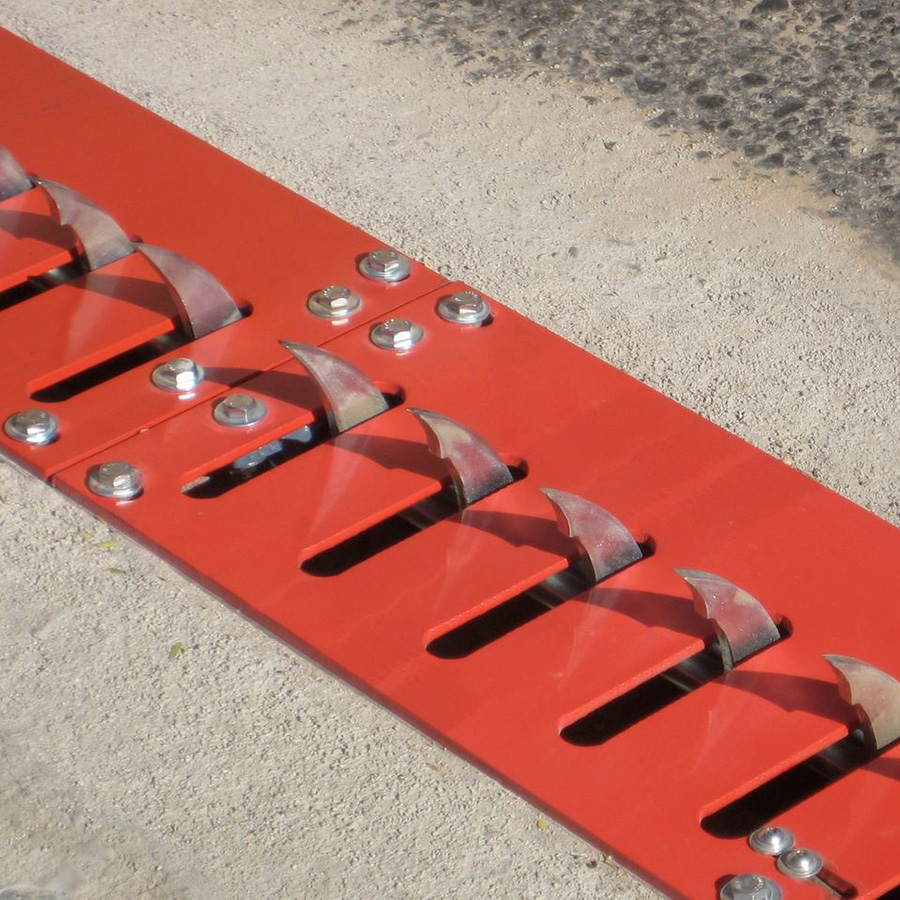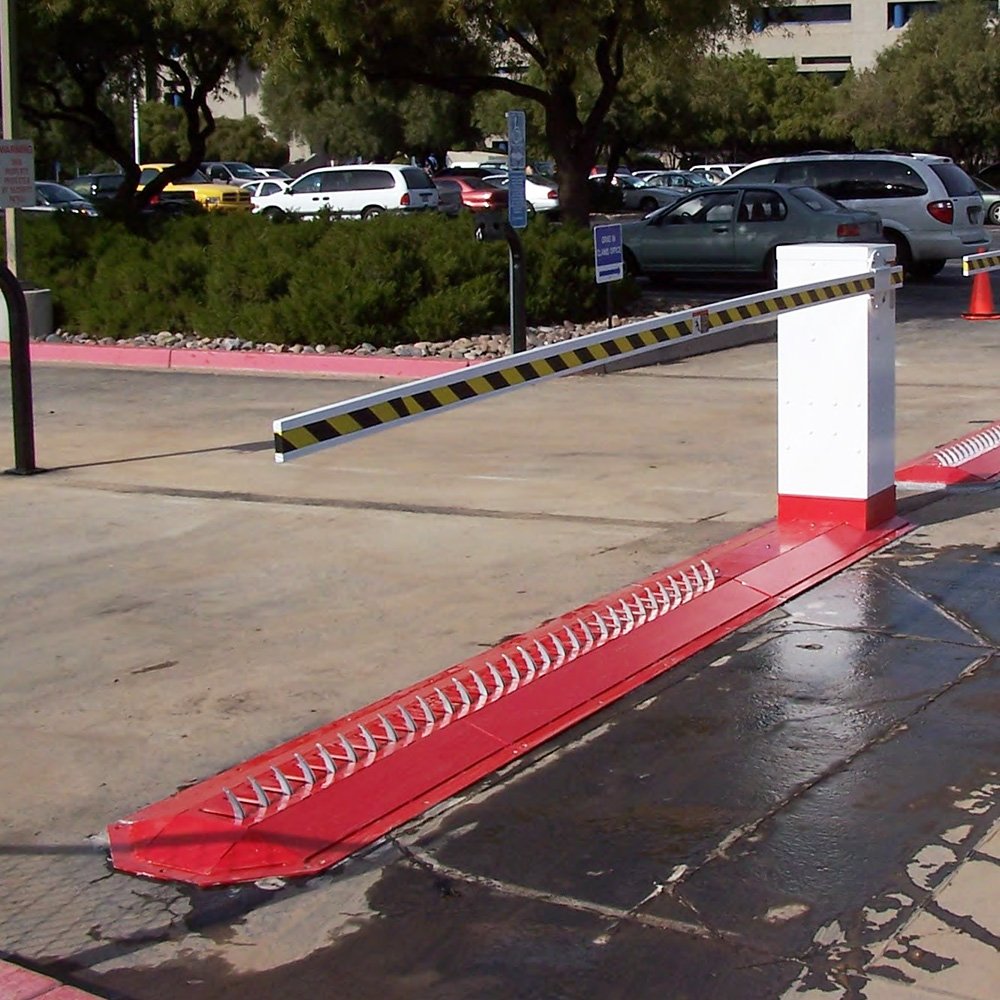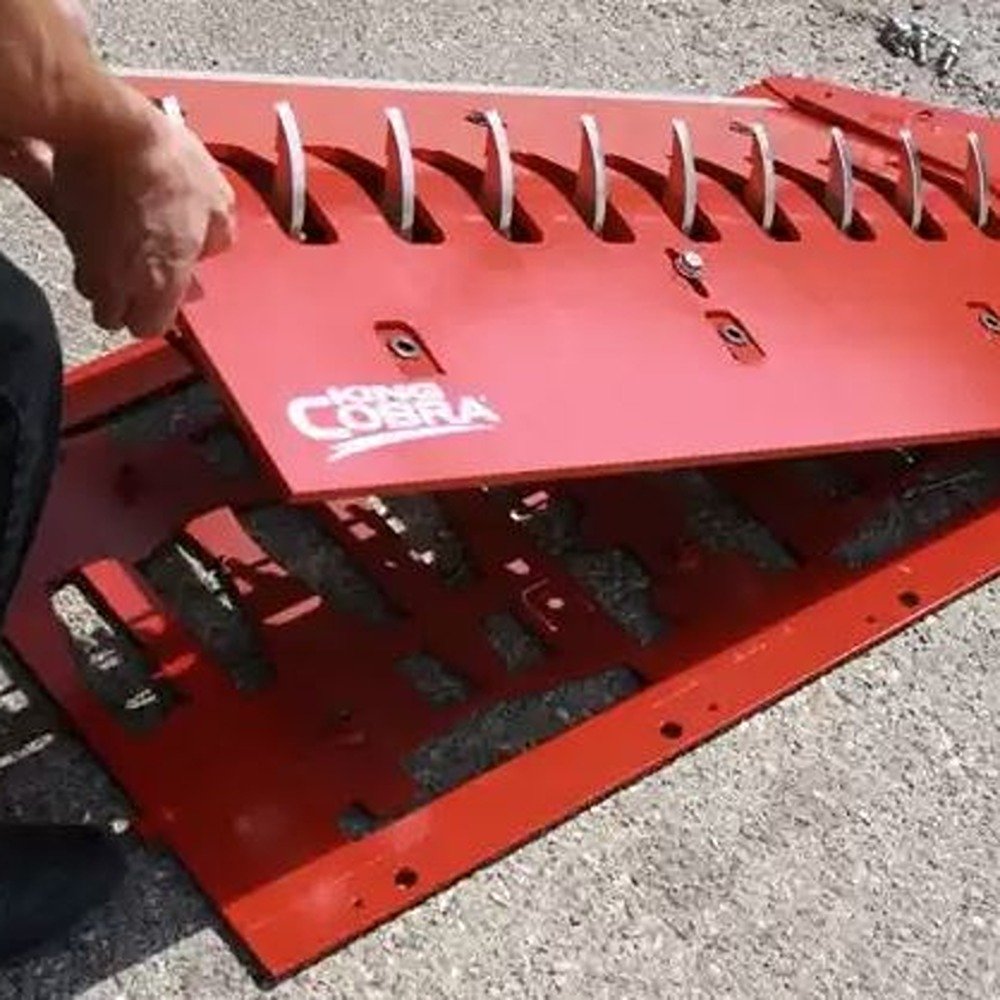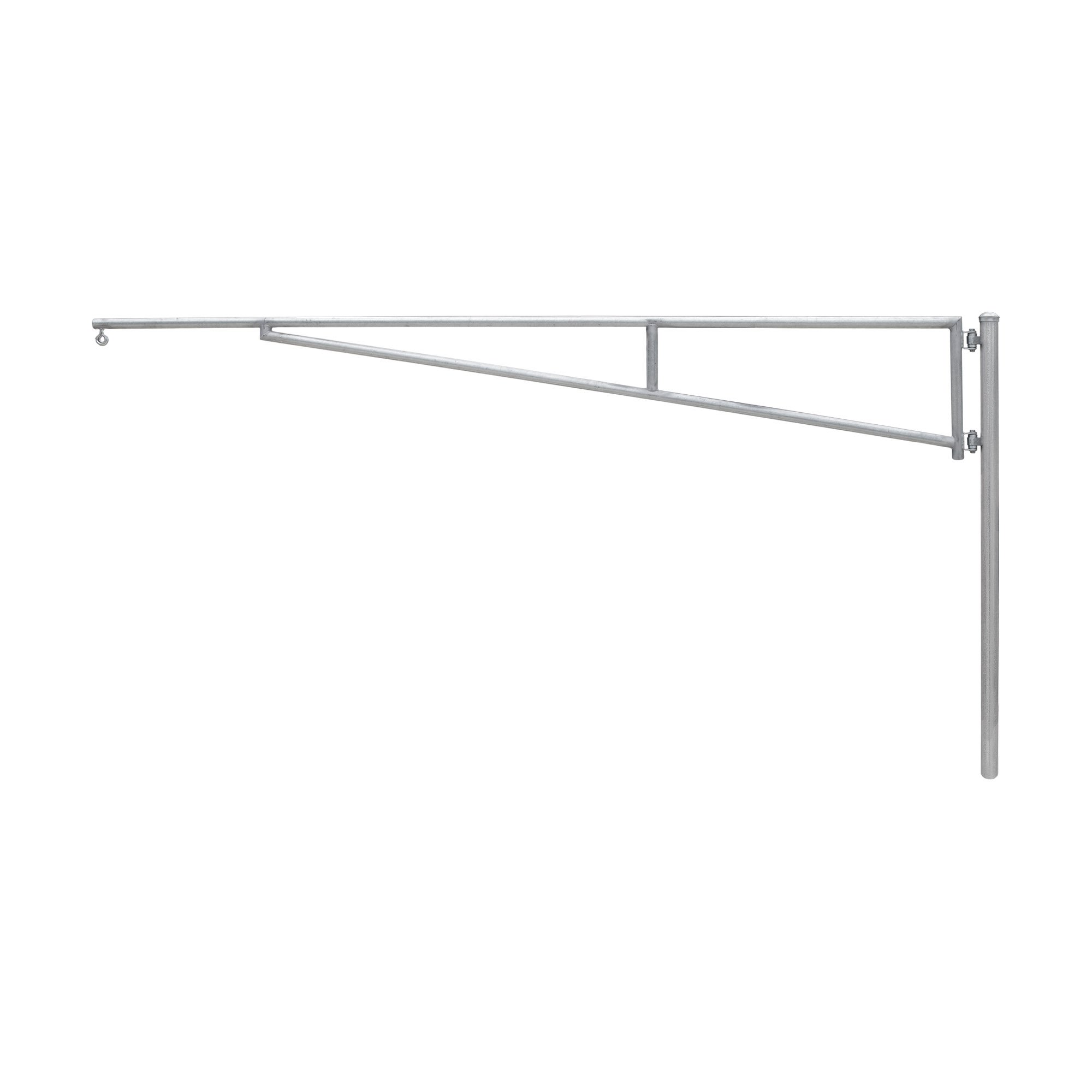What Is The Difference Between Surface Mounted And In-Ground Mounting?
When it comes to installing security products that are secured at the ground level, like fencing, gates, traffic spikes, and more, there are generally two ways to mount: surface mounting and in-ground mounting. Both surface mounting and in-ground mounting methods are easy to install, but there are different components to consider when installing. For swing barrier arm gates and traffic spikes, the mounting method is directly related to how the product has been designed, the components required, and the features and benefits each has to offer. The mounting method on products is largely the installer's preference, which is why Tiger Teeth Store prioritizes the mounting method for swing barrier arm gates and traffic spikes.
Swing Barrier Arm Gates
Surface Mount Swing Barrier Arm Gates include a post welded to a steel plate. The post is thus attached to a concrete block in the ground using four 3/4" bolts per plate. If you purchased a double swing barrier gate, you would need eight 3/4" bolts, four per plate. The benefit of surface-mounted barrier gates is that they can more easily be replaced should any damage occur.
In-Ground Swing Barrier Arm Gates' post or posts do not have a steel plate, meaning the post must be mounted directly in a block of concrete. While these do not require additional hardware, the disadvantages include leveling and likely complete replacement if the gate and its post were damaged.
Traffic Spikes
Surface-Mount Traffic Spikes are installed on asphalt or concrete surfaces using epoxy and anchor bolts. Surface-mount traffic spikes will also act as a speed bump, as it is not level with the ground surface. These are spring-loaded and are generally seen with end bevels, which are sold separately. Though popular because of its dual function, the only feature these do not have is sound dampening to decrease noise.
In-Ground Traffic Spikes require that the roadway surface be trenched, as these will sit in the ground and lay flush with the surface. Speed Bumps are a recommended addition to limit the speed of a vehicle before it crosses. These are available in lengths of three feet and six feet, rated for 15,000 lbs and 40,000 lbs per single axle load, respectively, which is significant compared to the three-foot surface-mount traffic spikes, which have a capacity of 15,000 lbs per single axle load. Additionally, the in-ground traffic spikes have the sound-dampening feature to decrease noise.
If you have further questions about which mounting method is a better application for you, please reach out to our friendly sales staff. They are happy to help in any way they can!
Contact Us
